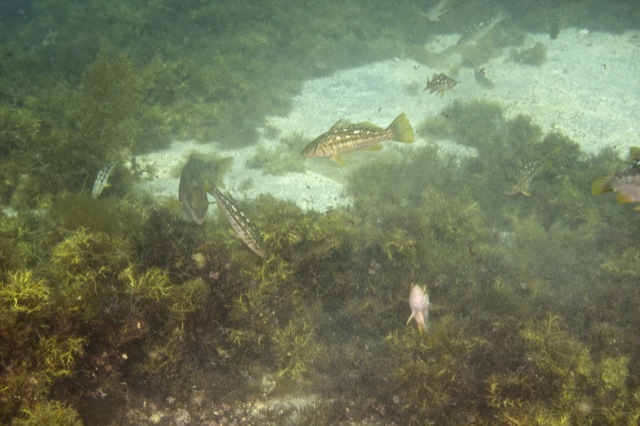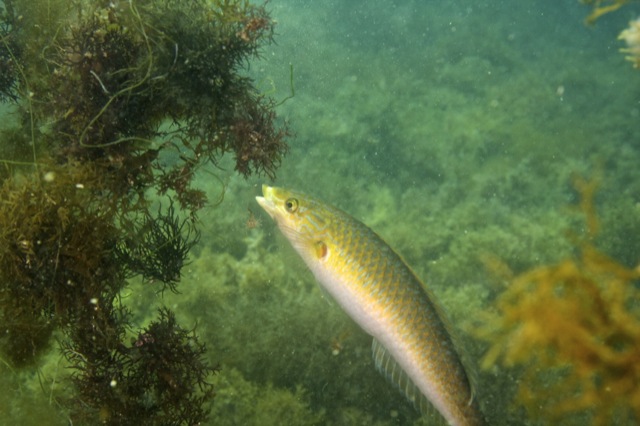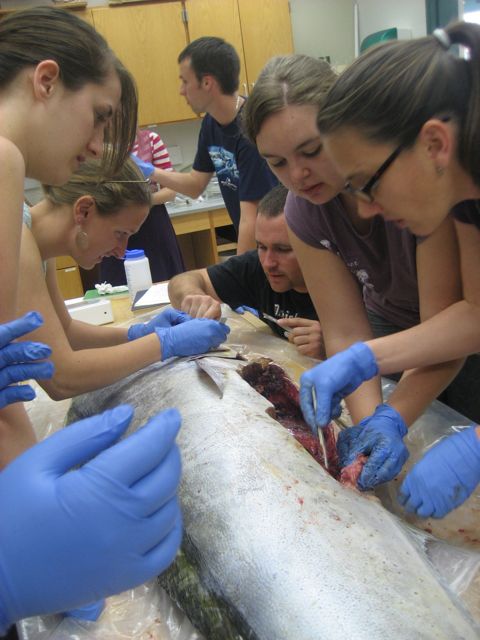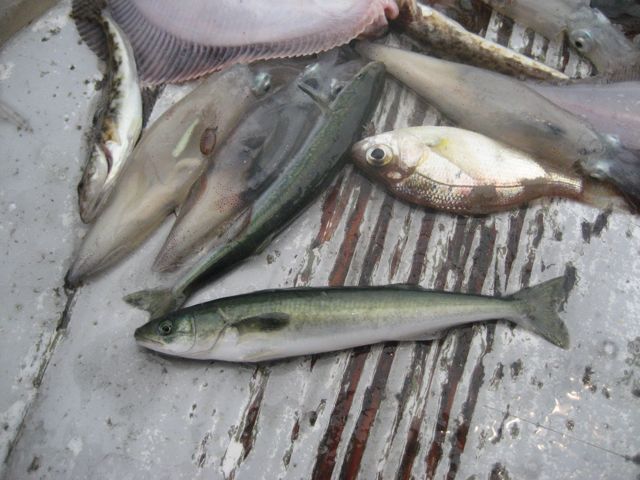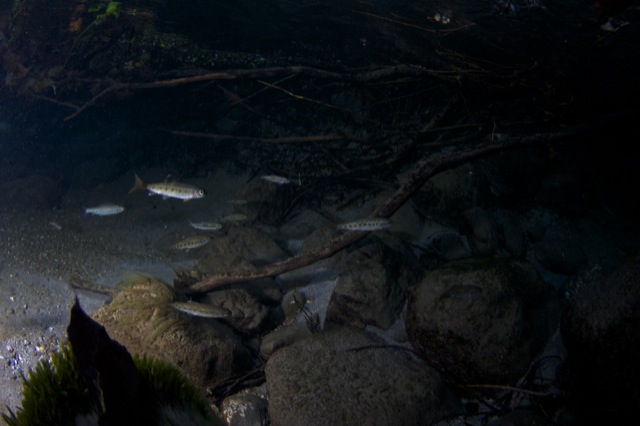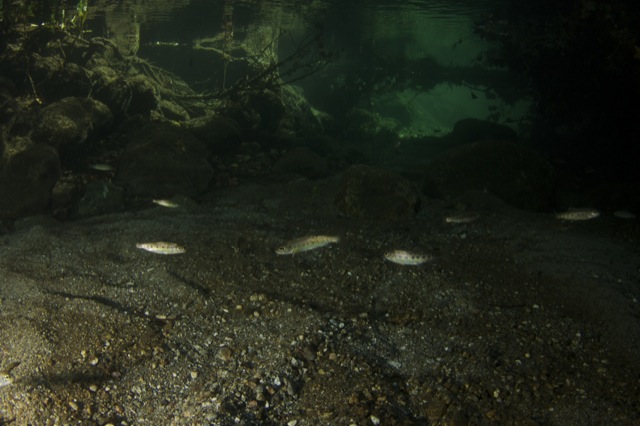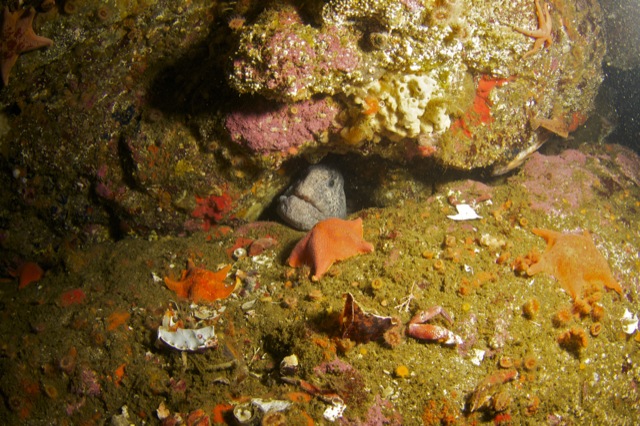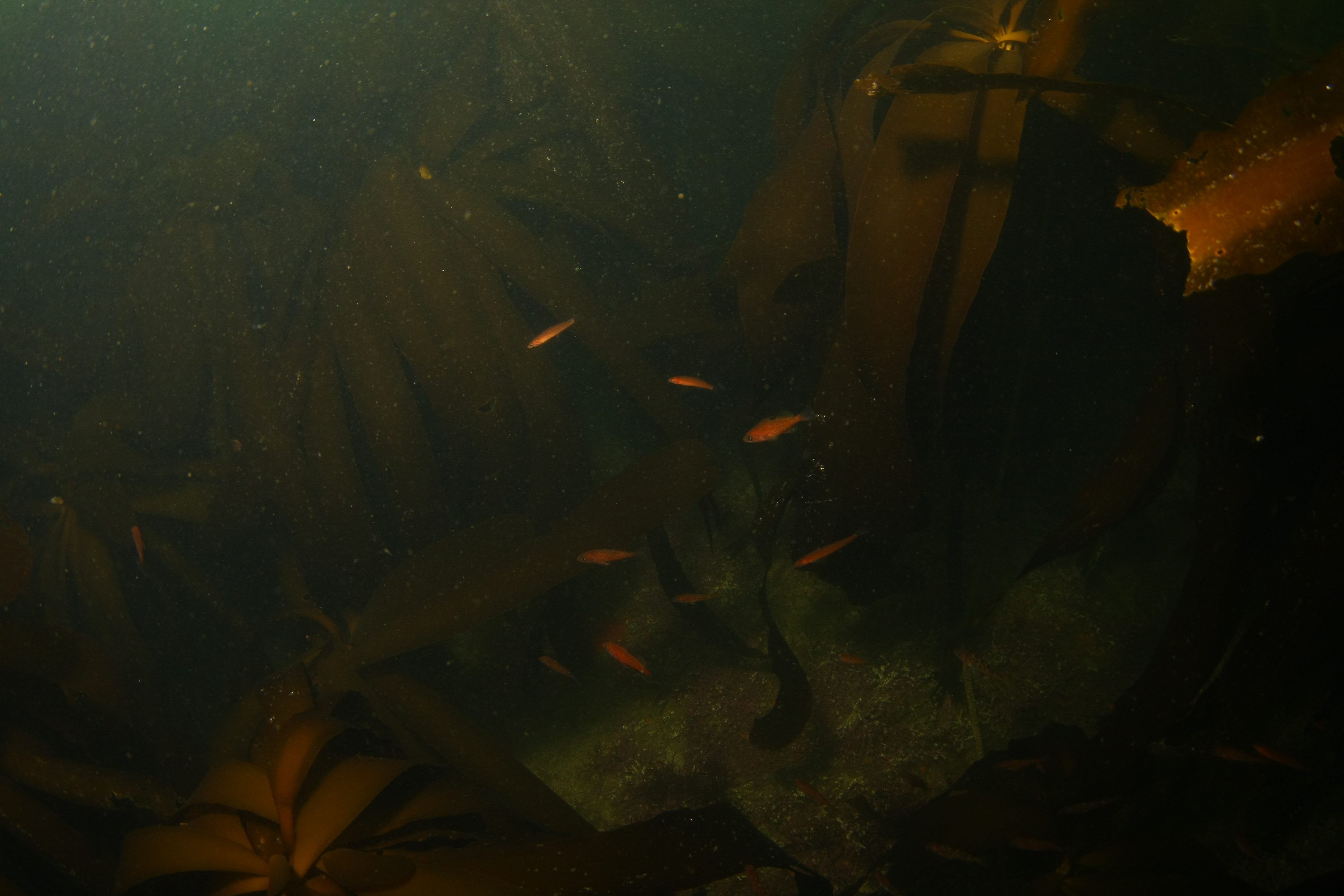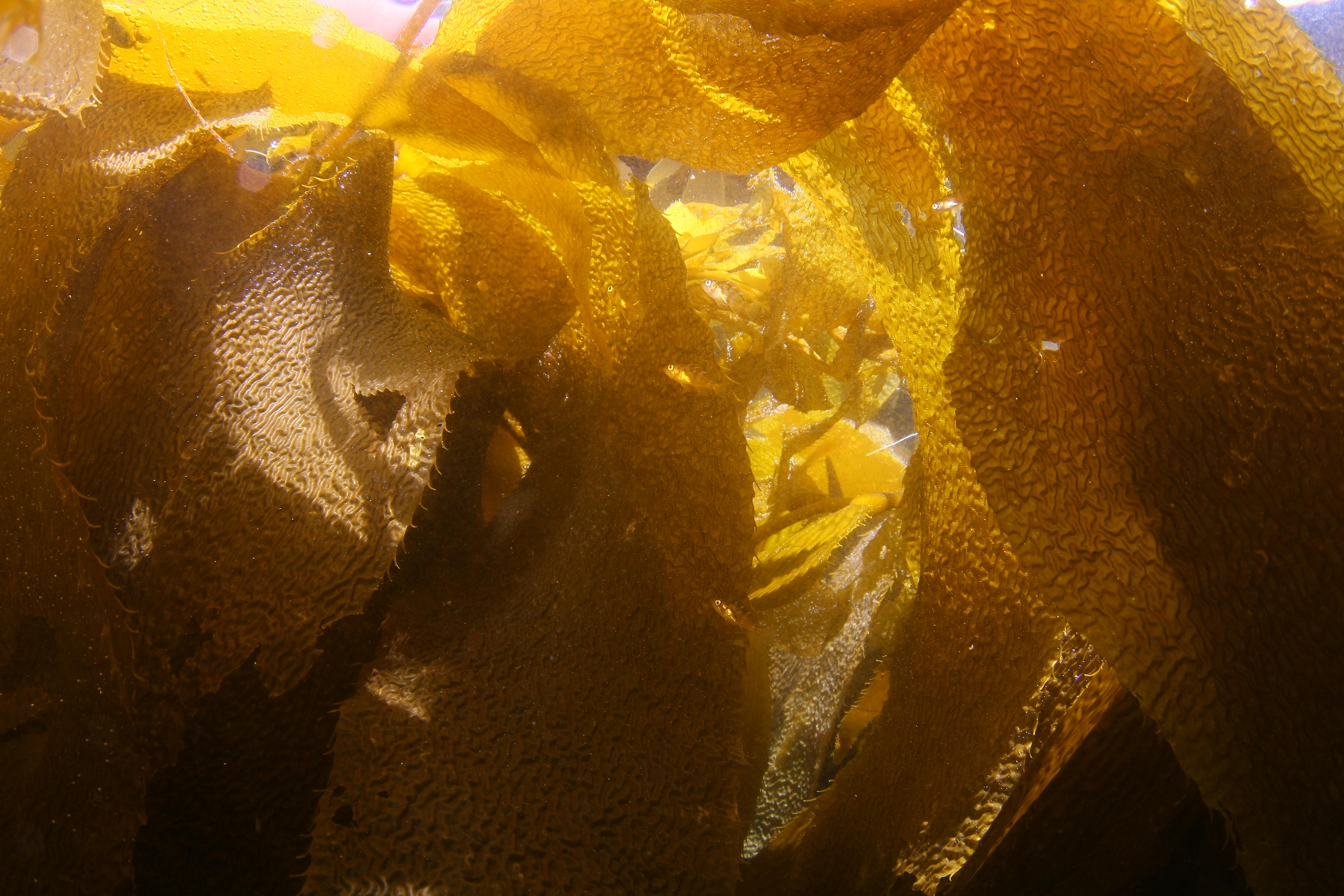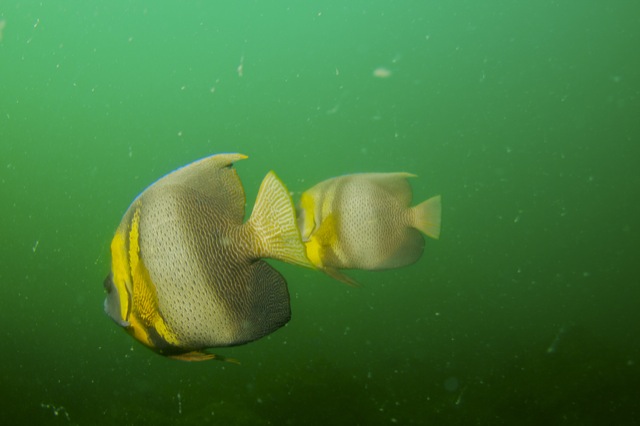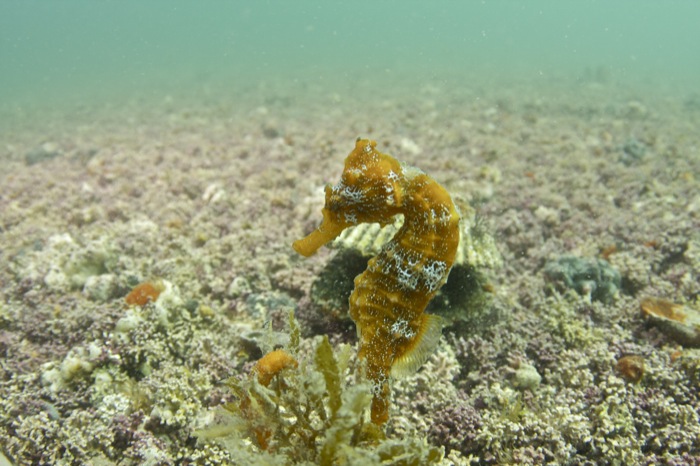By Scott Gabara
In the southern California bight, the Channel Islands archipelago sits in warm subtropical waters brought north along the coast from Mexico to the islands. Toward the east, Santa Catalina Island supports many different fishes living in these warm waters. On a recent thesis sampling trip, frenzied fish behavior was observed. Similar to people gathering at a popular eatery, small orange cigar shaped fish called Senorita, and speckled kelp bass, schooled near disturbances created by divers. You may see the small grayish crab in the photo just underneath the fish's mouth (see below). These fish would say that algae mats provide a home for many tasty invertebrates!


